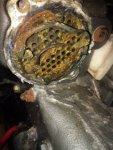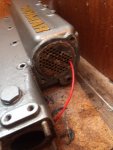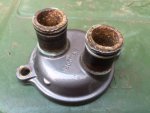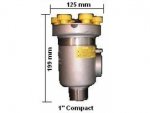Talulah
Well-known member
Engine issues this weekend so any suggestions of cause appreciated.
Set off fine across Channel Friday night. Motored for about 4 hours before the wind kicked in. Sailed the rest of the way.
Outside of Cherbourg Harbour restarted the engine but no water out the exhaust.
Removed sea water strainer. Fine. Removed engine impellor cover. Impellor looked fine but noticed hiss of air excape as the cover was loosened, prior to water flowing out
With the engine off sailed in to the marina and just restarted the engine at the last moment to berth. Still no water out of the exhaust.
Once alongside removed impellor cover again. Water flowed in. Started engine. Disconnected pipe on outlet side of heat exchanger. Water came out and all was well.
Restarted engine Sunday morning. No issues. All was well.
Sunday afternoon after sailing across Channel entered Portsmouth harbour and again no water out of the exhaust.
Pulled pipe off heat exchanger outlet side, no water coming out.
Engine is a Yanmar 4JH4E 8 years old.
I anticipate pulling the Sea Water cooling apart but any suggestions beforehand?
Many thanks.
Set off fine across Channel Friday night. Motored for about 4 hours before the wind kicked in. Sailed the rest of the way.
Outside of Cherbourg Harbour restarted the engine but no water out the exhaust.
Removed sea water strainer. Fine. Removed engine impellor cover. Impellor looked fine but noticed hiss of air excape as the cover was loosened, prior to water flowing out
With the engine off sailed in to the marina and just restarted the engine at the last moment to berth. Still no water out of the exhaust.
Once alongside removed impellor cover again. Water flowed in. Started engine. Disconnected pipe on outlet side of heat exchanger. Water came out and all was well.
Restarted engine Sunday morning. No issues. All was well.
Sunday afternoon after sailing across Channel entered Portsmouth harbour and again no water out of the exhaust.
Pulled pipe off heat exchanger outlet side, no water coming out.
Engine is a Yanmar 4JH4E 8 years old.
I anticipate pulling the Sea Water cooling apart but any suggestions beforehand?
Many thanks.




